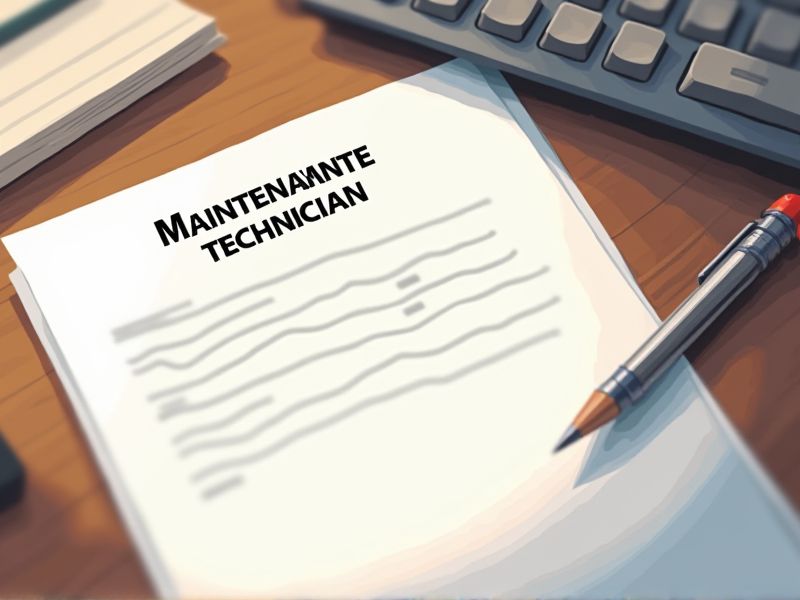
Airline maintenance technicians handle critical tasks to ensure aircraft safety and compliance with aviation regulations, making certifications a necessity. These certifications validate a technician's expertise in crucial areas such as aircraft systems, safety protocols, and technical troubleshooting. Regulatory bodies, like the Federal Aviation Administration, mandate these credentials to ensure standardization across the industry, enhancing trust among airlines and passengers. Here are some essential certifications you might need as an airline maintenance technician.
FAA Airframe and Powerplant (A&P) Certificate
The FAA Airframe and Powerplant (A&P) Certificate ensures that a maintenance technician has met standardized training requirements and possesses comprehensive knowledge necessary for maintaining aircraft safety and reliability. Certification is necessary because it allows technicians to legally work on and approve aircraft for return to service, ensuring compliance with federal regulations. The A&P Certificate enhances job prospects and professional credibility, aligning with industry expectations for proficiency and excellence. Possessing this certification is essential for resolving complex technical issues, minimizing the risk of mechanical failures, and ensuring passenger safety.
EASA Part-66 Aircraft Maintenance License
EASA Part-66 Aircraft Maintenance License provides standardized guidelines for certifying technicians, ensuring consistent safety and reliability across European airlines. The license allows maintenance technicians to legally release aircraft into service, which is crucial for operational efficiency and compliance. It demonstrates a technician's proficiency and knowledge, fostering trust from airlines and regulatory authorities. Holding this license often leads to better career opportunities and financial benefits for technicians due to the high demand for certified professionals.
Avionics Technician Certification
Airline maintenance technicians require Avionics Technician Certification to ensure they are skilled in maintaining and repairing the electronic systems that control aircraft operations. Obtaining the certification verifies that technicians possess the latest knowledge and competencies necessary for safely managing and troubleshooting avionics equipment. The certification also serves as a regulatory compliance measure to meet industry safety standards, reducing the risk of equipment failure. Employers often mandate the certification to confirm that their technicians are qualified and capable of minimizing aircraft downtime efficiently.
Non-Destructive Testing (NDT) Level II Certification
NDT Level II Certification is required for airline maintenance technicians because it equips them to accurately detect and assess structural defects in aircraft, ensuring safety and reliability. By holding this certification, technicians demonstrate proficiency in specific NDT methods, which allows airlines to comply with stringent aviation regulatory standards. The certification ensures that technicians have a comprehensive understanding of inspection procedures, minimizing the risk of missed defects that could lead to catastrophic failures. This level of qualification ultimately contributes to extending the lifespan of aircraft components and optimizing maintenance costs.
OSHA Safety and Compliance Certification
OSHA Safety and Compliance Certification is crucial for airline maintenance technicians as it ensures adherence to safety protocols, minimizing the risk of accidents and injuries during aircraft repairs. Compliance with OSHA standards protects both the worker and the integrity of the aircraft, maintaining operational safety and reliability. Certification also instills a culture of safety within the workforce, enhancing team communication and efficiency. Regulatory compliance supports the airline's legal standing, avoiding penalties and fostering public confidence in air travel safety.
HAZMAT Handling Certification
HAZMAT Handling Certification is essential for airline maintenance technicians as it ensures they understand the safe handling and disposal of hazardous materials, reducing the risk of accidents. This certification trains technicians in compliance with legal regulations, minimizing potential legal liabilities for airlines. Proper handling of hazardous materials prevents environmental contamination and ensures the safety of passengers and crew. Certification fosters a safer workplace, decreasing the likelihood of costly operational disruptions caused by HAZMAT incidents.
Lean Six Sigma Green Belt Certification
Lean Six Sigma Green Belt Certification helps airline maintenance technicians increase efficiency by systematically identifying and reducing waste in their processes. Improved process efficiency leads to reduced downtime for aircraft, which enhances fleet availability and operational performance. Technicians with this certification contribute to higher safety standards by using data-driven approaches to solve maintenance issues swiftly. The certification also fosters a culture of continuous improvement, motivating teams to consistently evaluate and enhance maintenance protocols.
Aircraft Structural Repair Certification
Aircraft Structural Repair Certification ensures that airline maintenance technicians are proficient in identifying and repairing critical structural damage, minimizing safety risks. Certification provides standardized procedures for maintenance, ensuring consistency and adherence to aviation safety regulations. Technicians with certification are trained to use specialized tools and materials which improve repair accuracy and longevity. Airlines gain trust from regulatory bodies and passengers when maintenance staff hold recognized certifications, improving operational credibility.
ISO 9001 Quality Management Systems Certification
ISO 9001 Quality Management Systems Certification ensures that airline maintenance technicians follow standardized procedures, reducing the risk of errors in aircraft maintenance. With this certification, airlines demonstrate their commitment to safety and quality, which enhances passenger trust. The systematic approaches outlined by ISO 9001 help in efficient documentation and traceability, crucial for regulatory compliance. Continuous improvement fostered by ISO 9001 leads to enhanced operational efficiency and prolonged aircraft service life.
Airport Ramp Safety and Emergency Procedures Certification
Airport ramp safety and emergency procedures certification reduces the risk of accidents and injuries for airline maintenance technicians working in high-risk environments. Certification ensures technicians are equipped with knowledge to handle emergencies, promoting a rapid and organized response. Proper training leads to a decrease in operational disruptions due to mishaps and contributes to overall efficiency in airport operations. Regulated certification upholds industry standards, fostering trust and cooperation among aviation professionals.
Summary
With certifications, you can enhance your skills and knowledge, leading to increased employability. Airlines prefer hiring certified technicians for their specialized expertise, which results in better job security. The enhancement in operational efficiency and safety standards positively impacts customer satisfaction. Certifications may also boost your earning potential and advancement opportunities within the aviation industry.
